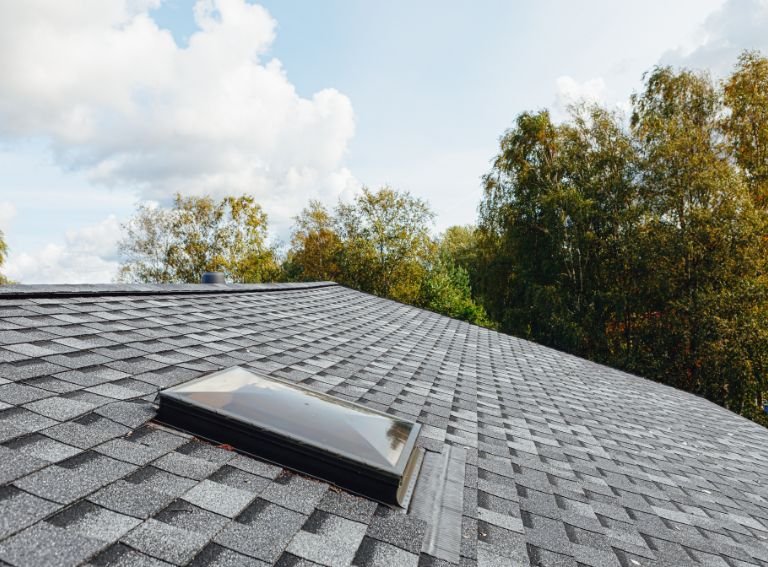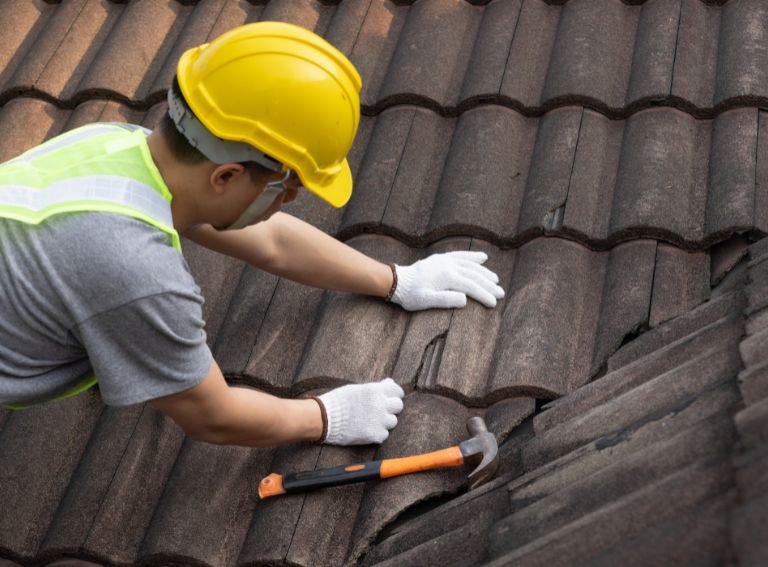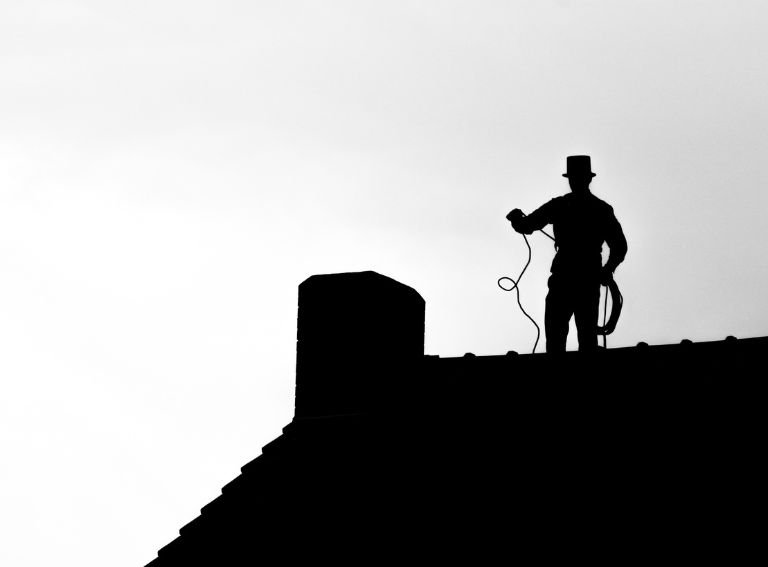Connecticut winters aren’t just cold—they’re punishing. With Hartford averaging over 40 inches of snow each year and storms hitting hard from November through March, your roof takes a serious beating. Between heavy snow, ice buildup, and sudden temperature drops, roof problems can appear fast—and cost even more if ignored.
Leaks, sagging shingles, and ice dams aren’t random—they’re signs your roof needs help. But the good news? Most winter roofing issues can be prevented with the right maintenance and quick action.
So read on—we’ll explain how ice dams form, how to spot trouble early, and what to do if snow or storms damage your roof. Whether you’re planning ahead or already dealing with a leak, this guide will help you protect your home, avoid big repair bills, and make smart choices all winter long.
Understanding Connecticut’s Winter Climate and Its Roofing Impact

Hartford averages over 40 inches of snowfall each year—and towns like Simsbury or Litchfield get even more. That snow might look peaceful, but it stacks up fast, putting serious pressure on your roof. Six inches of wet snow can weigh hundreds of pounds per square foot, and when that sits for weeks, your shingles, flashing, and gutters start feeling it.
But snow is just the start. Connecticut winters bring a rotating mix of snowstorms, ice storms, and freeze-thaw cycles. One day it’s melting; the next it’s refreezing. That’s how ice dams start—water gets trapped under the shingles, backs up, and eventually leaks inside your home.
NOAA data shows these storms are growing more intense, with more wind, heavier snow, and freezing rain events across the state. That combo doesn’t just damage roofs—it overwhelms them. Shingles can lift, gutters clog with ice, and roof decks soak through before you even see the first stain on your ceiling.
So read on—next, we’ll break down how ice dams actually form, and what you can do right now to stop them before they turn into expensive repairs
What Is an Ice Dam and How Does It Form?
Ice dams start when warm air from your attic melts the snow on your roof. That water runs down to the edges, where it’s still cold, and refreezes. Over time, this creates a solid ridge of ice at the eaves. As more snow melts, the water gets trapped behind the ice and has nowhere to go but under your shingles.
That’s when the real trouble starts. Water leaks into your attic, soaks insulation, and drips down your walls. You might notice stains, mold, or even a musty smell. Left alone, it can rot your roof deck, ruin your ceilings, and damage your gutters.
And the worst part? It all starts from a small amount of heat loss.
Signs You Need Roof Leak Repair (Before It Gets Worse)
Roof leaks rarely start with a flood—they creep in quietly and get worse fast. Spotting the warning signs early can save your ceiling, walls, and wallet.
Interior Clues
Leaks often show up inside before you notice anything on the roof. Water stains on ceilings or upper walls are usually the first sign—sometimes just a faint ring, other times a large brown spot that spreads fast after a storm. Peeling paint, bubbling drywall, or a musty smell in the attic? That’s water getting in. And if you see actual drips, it’s already past the early stage.
Quick fix: Place a bucket to catch drips, dry out the area, and check the attic for the water entry point. Schedule a roof inspection ASAP.
Exterior Signs
Step outside and look up. Icicles forming on the eaves may look harmless, but they often mean an ice dam is blocking melting snow from draining. You might also see uneven snow melt on the roof—warm areas where insulation is weak or where leaks are already happening. Check for sagging sections, missing shingles, or cracks near the edges. These are early warnings your roof is wearing down and letting water in.
Quick fix: Safely remove snow with a roof rake and clear out gutters if possible. Don’t climb the roof—call a professional if shingles are missing or sections look unstable.
Roof Repair in Connecticut: Prevention Is Better (and Cheaper) Than the Cure
Emergency roof repairs can cost a fortune—especially in the middle of winter. But with a little prevention, you can avoid most of the damage that snow, ice, and wind bring. Here’s what smart homeowners in Connecticut do before the first storm hits.

Essential Winter Maintenance Tips
- Clear Snow Quickly (But Safely)
Snow piles up fast, and the longer it stays, the more weight and water your roof has to deal with.
- Use a roof rake with a long handle to pull snow down from the edges. Start from the bottom and work your way up. Never use metal tools or climb onto an icy roof—you’ll risk injury or damage the shingles.
- Keep Gutters and Downspouts Clear
Clogged gutters trap water, which can freeze and create ice dams.
- Clean out leaves, sticks, and buildup before the first snowfall. If water can’t drain, it’ll back up under the shingles.
- Check and Upgrade Attic Insulation
If your attic is losing heat, it’s melting the snow above it—and that’s how ice dams form.
- Add or replace insulation to help keep your attic cold and your roof snow intact. It also cuts down on your heating bill.
- Ventilation Matters
Without airflow, warm air builds up in the attic and speeds up snow melt.
- Make sure your soffit and ridge vents are working so air can flow through and regulate roof temperature.
Pre-Winter Roof Inspection Checklist
Before the snow falls, take a close look at your roof—or better yet, have a local roofer do it for you. Here’s what to check:
- Flashing around chimneys, vents, and skylights—look for rust, cracks, or gaps.
- Shingle wear—missing, cracked, or curling shingles are weak spots for leaks.
- Sealant around vent pipes and flashing—dried or peeling sealant needs reapplying.
- Gutter alignment and condition—loose or sagging gutters won’t drain water properly.
Emergency Roof Repair: What to Do When Storm Damage Strikes
Storm damage doesn’t wait. Whether it’s a tree limb, high winds, or heavy snow that tears through your roof, quick action can stop things from getting worse. Here’s how to protect your home, minimize water damage, and get repairs started fast.

Immediate Actions to Prevent Further Damage
If your roof starts leaking or gets punctured during a storm, you need to act quickly but safely.
- Tarp any exposed areas using heavy-duty plastic or a waterproof tarp. Secure it with boards or weights to prevent more water from entering.
- Remove standing water with towels, wet vacs, or buckets—whatever works to get water out fast.
- Move furniture, electronics, or valuables away from the leak area. Cover anything you can’t move with plastic or waterproof material.
These steps won’t fix the damage, but they’ll buy you time and prevent bigger problems until a professional can step in.
When to Call a Professional
If you see multiple leaks, water pouring through light fixtures, or any sign of structural sagging, don’t try to fix it yourself.
These are signs the damage is more than surface-level—and climbing up a wet, unstable roof is a risk not worth taking.
Let me explain: Connecticut winters are tough on roofs. You need someone who knows how to handle ice, snow, and storm repairs in cold conditions. We repair, replace, and handle roof insurance claims, so you don’t have to juggle contractors and paperwork while your home is exposed.
Insurance Tips for Storm and Snow Damage
Most homeowners’ roofing insurance policies cover damage from storms and heavy snow, but only if it’s documented and reported properly.
- Take clear photos or videos of every damaged area—roof, ceilings, attic, and even puddles.
- Keep receipts for any emergency fixes you do yourself (like tarps or water removal).
- Let your roofer help with the estimate. A licensed local contractor—like us—can provide the documentation your insurance adjuster needs.
If repairs don’t cut it, we can help you with full roof replacements and handle the paperwork too—fast, fair, and fully licensed for Connecticut.
Affordable Roof Repair Solutions for Connecticut Homeowners
Roof repairs don’t have to break the bank. Whether you’re trying to stay ahead of problems or fix sudden damage, there are cost-effective options that make sense for your budget—and your roof.
Seasonal Maintenance Plans
Preventive care always costs less than a full replacement. Seasonal maintenance keeps your roof in shape and helps spot small issues before snow or ice turns them into major repairs. Many Connecticut roofing companies (including us) offer affordable winter roof checkups. These include inspections, minor fixes, and advice on how to prep your home for the season.
Let me explain, catching a cracked shingle or loose flashing early can save you from a mid-winter leak that costs ten times more.
Energy Efficiency Upgrades
Some upgrades do more than protect your roof—they also cut heating bills.
- Insulated roof decking helps keep your attic colder, which prevents snow from melting unevenly.
- Ice and water shield membranes stop leaks where snow and ice build up most—like eaves and valleys.
- Radiant barriers or reflective insulation add another layer of protection while keeping heat where it belongs—inside your home.
Upgrades like these pay off over time and may even qualify for energy rebates or tax incentives.
Budget-Friendly Emergency Fixes
- Not every repair needs a full tear-off. We offer spot leak repairs to patch specific areas quickly and stop water in its tracks.
- If shingles are missing or curling, partial re-shingling can restore coverage without redoing the whole roof.
- Gutter and soffit repairs are another low-cost way to prevent water from backing up and damaging your siding or foundation.
If you’re dealing with something more serious, we also offer affordable replacement options and can help guide you through the insurance process.
Conclusion: Stay Ahead of Winter—Protect Your Connecticut Roof Now
Connecticut winters aren’t kind to your roof—but most of the damage they cause can be avoided. From ice dams and hidden leaks to storm damage and sagging shingles, early action always costs less than a full-blown emergency. Whether it’s clearing snow, upgrading insulation, or handling a repair after a storm, the smartest move is staying one step ahead.
Need help? We offer full-service roof repairs, replacements, and even handle the insurance claim process for you—start to finish. So whether you’re prepping for winter or dealing with damage right now, we’ve got you covered.
Schedule a roof inspection with hira roofing today and protect your home before the next storm hits.




